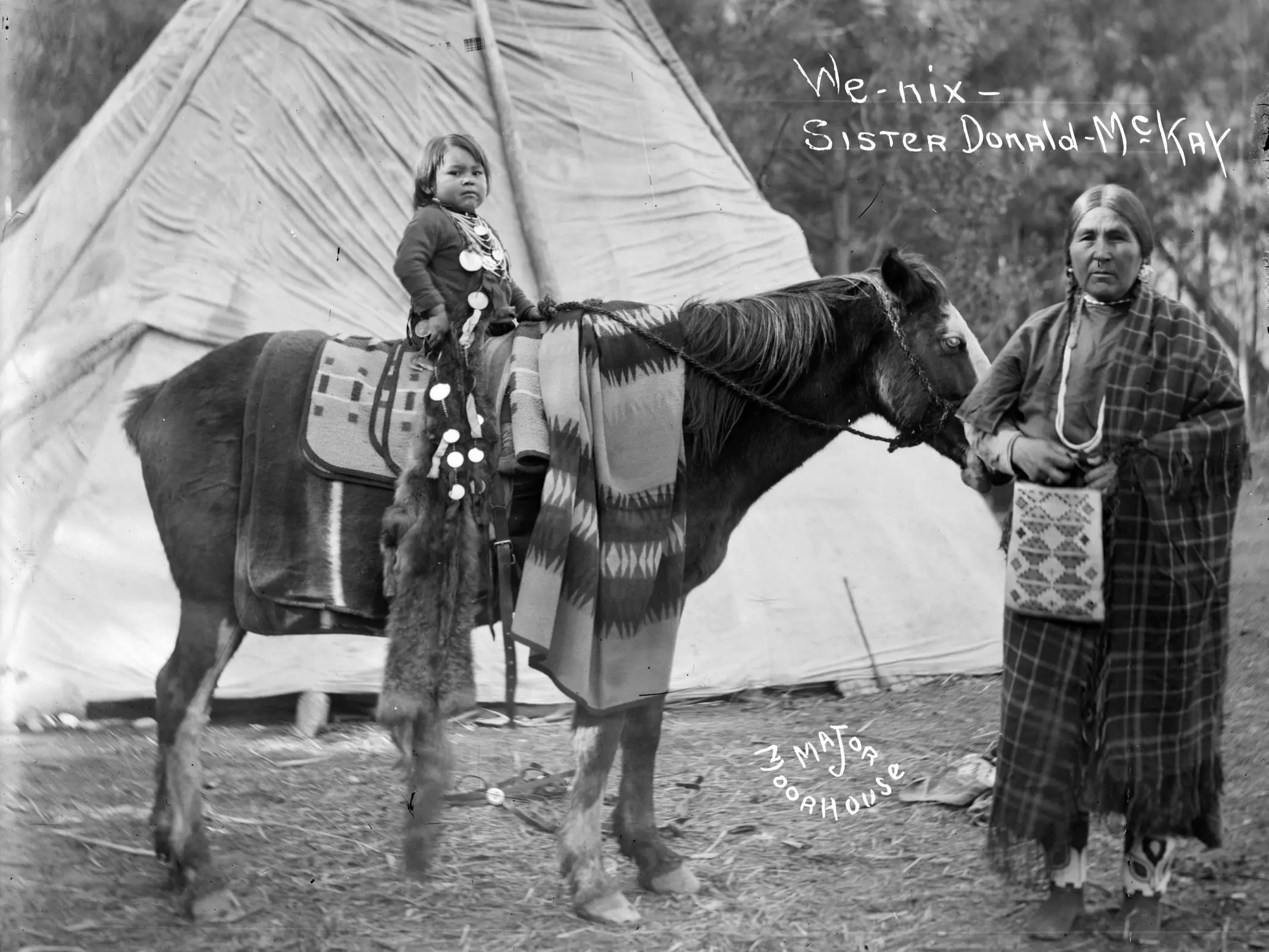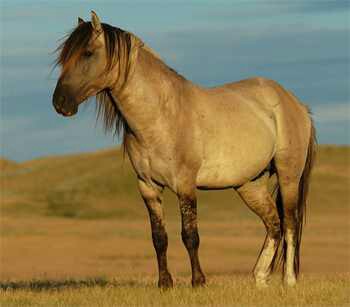
The Enduring Spirit: Cayuse Horse Breeding and the Rise of the Northwest’s Tribal Steeds
In the rugged, expansive landscapes of the American Pacific Northwest, a unique equine lineage emerged, deeply intertwined with the fate and culture of its indigenous peoples: the Cayuse horse. More than just a mode of transport or a beast of burden, this remarkable animal was a partner, a symbol of wealth, and a testament to the sophisticated breeding practices of tribes like the Cayuse, Nez Perce, and Palouse. The development of this tribal horse was not accidental; it was the result of centuries of selective breeding, keen observation, and an unparalleled understanding of equine physiology and temperament, transforming the very fabric of Native American life in the Columbia River Plateau.
The story of the Cayuse horse begins not in the Northwest, but far to the south, with the arrival of Spanish conquistadors in the early 16th century. These explorers brought with them horses, descendants of North African Barb and Iberian breeds, animals perfectly adapted to harsh conditions and long distances. Initially, the Spanish jealously guarded their horses, understanding their strategic value. However, the Pueblo Revolt of 1680, a successful uprising of indigenous peoples against Spanish rule in New Mexico, released thousands of horses into Native hands. From this pivotal moment, horses began to spread rapidly north through intricate trade networks.
By the early 18th century, horses had reached the tribes of the Columbia River Plateau. For peoples who had traditionally relied on foot travel, canoes, and dog travois, the horse was a revolutionary force. It instantly expanded hunting ranges, particularly for buffalo, enabled longer-distance trade, and fundamentally altered warfare tactics. Among the tribes that quickly mastered horsemanship and, crucially, horse breeding, were the Cayuse, the Nez Perce (Nimiipuu), and the Palouse. These groups, sharing linguistic and cultural ties, became renowned across the continent for their vast herds and the exceptional quality of their horses.
The Cayuse tribe, from whom the horse derives its name, were strategically located at a crossroads of trade routes, giving them access to diverse horse stock and a broad understanding of desirable traits. Unlike random domestication, the Cayuse and their neighbors engaged in deliberate, selective breeding, driven by specific goals essential for their survival and prosperity. They sought horses that possessed endurance for long journeys across varied terrain, speed for buffalo hunts and skirmishes, agility for navigating broken landscapes, and intelligence and a tractable temperament for easy training and partnership.
Their breeding programs were sophisticated, predating European scientific understanding by centuries. They understood the principles of heredity and applied them rigorously. Stallions of proven quality – those with exceptional speed, stamina, and disposition – were carefully chosen to sire foals. Mares were also selected for their strength, fertility, and the quality of their offspring. Inferior animals were often culled or traded away, ensuring that only the best genetics remained within the herd. This focused selection process over generations led to the development of a distinct type: the Cayuse horse.

Physically, the Cayuse horse was typically compact and muscular, standing around 13.2 to 14.2 hands high. Their build reflected their purpose: deep chests for lung capacity, powerful hindquarters for bursts of speed, and remarkably tough, iron-hard hooves that often didn’t require shoeing, a testament to their adaptation to the rocky, varied terrain of the Northwest. Their coats were often vibrant, with many exhibiting the distinctive spotted patterns now famously associated with the Appaloosa – a breed whose development is inextricably linked to the Nez Perce and their Cayuse-type horses. These patterns, ranging from leopard spots to blanket patterns, were not merely aesthetic; they were often seen as marks of distinction and favored in breeding.
Beyond physical attributes, the temperament of the Cayuse horse was highly prized. They were known for their intelligence, courage, and a strong will, yet they were also remarkably responsive and loyal partners. This combination made them ideal for the demanding tasks of tribal life, from navigating treacherous mountain passes to facing down a charging buffalo or an enemy warrior. They were hardy, able to survive harsh winters with minimal human intervention, foraging for themselves and enduring extreme temperatures.
The impact of the horse on the Cayuse and neighboring tribes was profound. Economically, horses became a form of currency and a measure of wealth. Large herds signified status and provided a surplus for trade, allowing tribes to acquire goods they could not produce themselves. Militarily, the horse transformed tribal warfare, giving warriors unprecedented mobility and striking power. Hunting, especially of bison on the Great Plains, became far more efficient, ensuring a reliable food supply and materials for clothing and shelter. Culturally, the horse became deeply embedded in tribal identity, featuring in ceremonies, oral histories, and art. The bond between rider and horse was sacred, often seen as a spiritual partnership.
The journals of Lewis and Clark, during their monumental expedition through the region in the early 19th century, offer invaluable firsthand accounts of these remarkable horses and the tribes that bred them. Encountering the Nez Perce in 1805, Meriwether Lewis noted, "Their horses are of an excellent breed, lofty, elegantly formed, active and durable." He further observed, "The Nez Perce possess a greater number of horses than any other nation of the continent." While referring specifically to the Nez Perce, these observations speak to the general excellence of the horse culture in the Plateau region, where the Cayuse were also preeminent breeders. The expedition itself relied heavily on these native-bred horses to traverse the daunting Rocky Mountains, a testament to their superior qualities.
However, the tide began to turn with the relentless westward expansion of European-American settlers in the mid-19th century. The Oregon Trail brought waves of immigrants, leading to conflicts over land and resources. The reservation system, imposed by the U.S. government, severely restricted tribal lands and traditional grazing areas, crippling their ability to maintain large, selectively bred herds. The once-free-ranging horses were confined, their breeding programs disrupted, and their populations dwindled.
As settlers brought their own breeds – Thoroughbreds, Quarter Horses, and draft horses – cross-breeding became common. The distinct characteristics of the original Cayuse horse began to dilute. The term "Cayuse" itself, once a mark of quality and a specific type, regrettably devolved into a generic, often pejorative, term for any smaller, hardy range pony, regardless of its lineage. This linguistic shift reflected the broader subjugation and marginalization of the Native American people and their cultural heritage.
Yet, the spirit of the Cayuse horse endured. Its genetic legacy profoundly shaped the Appaloosa, a breed whose modern registry, founded in 1938, aimed to preserve the spotted patterns and other desirable traits of the horses bred by the Nez Perce and their neighbors. While the Appaloosa has since been developed to meet specific breed standards, its roots are undeniably in the tribal horses of the Northwest, carrying forward the distinctive patterns and some of the hardiness.
Today, efforts are being made by tribal communities and dedicated enthusiasts to reconnect with and preserve the original Cayuse type. Through careful research, selective breeding programs, and a deep respect for historical practices, there’s a growing movement to re-establish horses that embody the strength, intelligence, and spirit of their ancestors. These initiatives are not merely about preserving a horse breed; they are about reclaiming cultural identity, honoring ancestral knowledge, and celebrating the enduring bond between people and their most cherished animal partners.
The Cayuse horse, a product of centuries of sophisticated indigenous breeding, stands as a powerful symbol of resilience, adaptation, and the profound wisdom of the Native American tribes of the Northwest. From its Spanish origins to its pivotal role in tribal life and its enduring genetic legacy, this remarkable animal represents not just a chapter in equine history, but a testament to the ingenuity and deep connection to the natural world held by its original breeders. Its development was a masterclass in animal husbandry, a legacy that continues to inspire and inform our understanding of the powerful partnership between humans and horses.
